Olympic National Park's wild magic drew my family in long ago.
Across two visits filled with wonder, we discovered its diversity through boots-on-the-ground exploration: marching through misty ancient forests, climbing mountain vistas so stunning they stole our breath, beach combing Pacific-battered sands littered with driftwood sculptures.
Each twist of the trail revealed new surprises, from mossy maple tunnels to tidepools twinkling with jewel-toned stars. By trip two, Olympic had mesmerized us completely with its promise of endless discovery over many enchanted returns.
The park patiently holds its secrets, waiting for those who meet its wilds with eager footsteps, open eyes, and youthful curiosity. All it takes is that first step and Olympic weaves its magic, casting a lifelong spell.
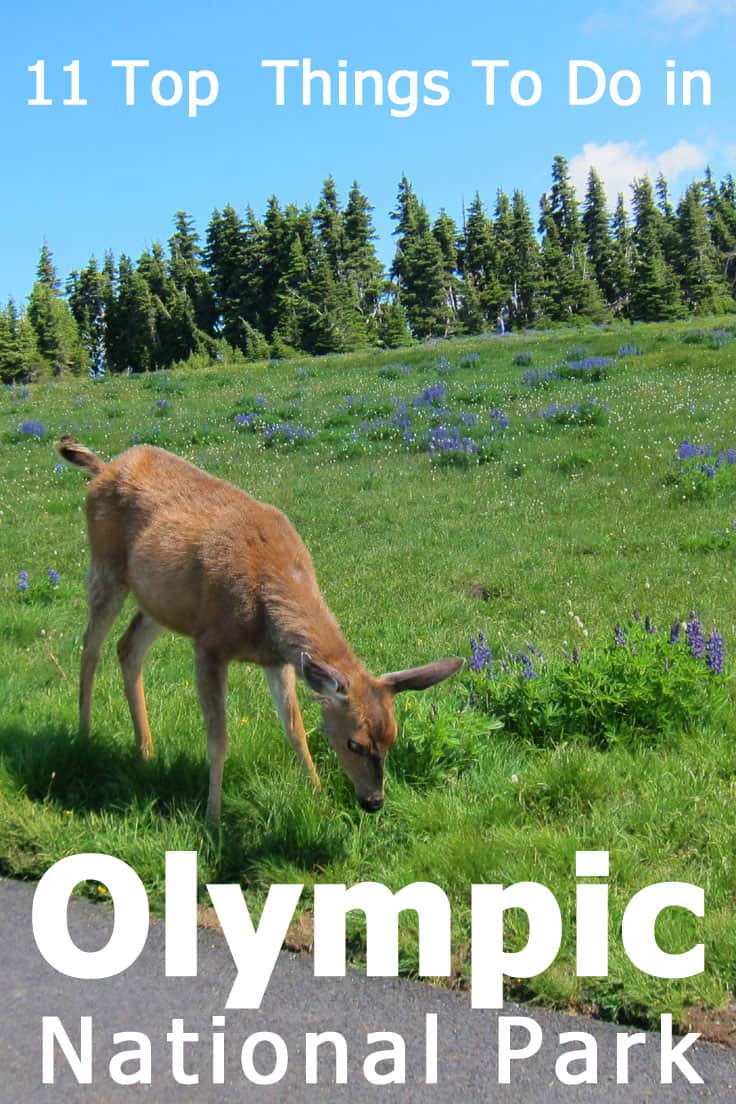
And since everyone loves lists, I thought I'd start with one of the top things to do in the park!
Here are the top 11 things to do when visiting Olympic National Park:
- Take a stroll through the Hall of Mosses Trail
- Explore Enchanted Valley
- Hike through Quinault Valley
- Kayak or Canoe on Lake Crescent
- Explore Hurricane Ridge
- Soak in the Hot Springs at Sul Duc Resort
- Explore Rialto Beach
- Hike to Hole in the Wall
- Go Whale Watching or Tide Pooling at Kalaloch Beach
- Take in a Sunset (or Storm) at Kalaloch Lodge
- Explore Neah Bay
Please keep reading to find a description of each of the park sections as well as a more detailed explanation of the different activities from this list you can do within them and landmarks you need to see while there. I also provided some suggestions for places to stay at the end of the post to help you plan your trip!
Why Visit Olympic National Park?
What makes Olympic National Park so special?
For starters, this paradise packs three wildly different ecosystems into one magical place: rainforests brimming with moss-draped maples, craggy Pacific coastlines with tidepools dotted in technicolor, and towering mountains rugged enough for mountain goats.
You can journey from the ocean's edge through the forest to alpine peaks on the same day if your legs and lungs are up for it!
Beyond the diversity, Olympic earned its prestige as an International Biosphere Reserve and UNESCO World Heritage site by sheltering a rich web of life, spanning tiny lichens to Roosevelt elk.
It's a choose-your-own-adventure paradise tailored to every age and activity, whether you seek beachcombing, biking, or a backcountry camping challenge.
Highway 101 makes the park surprisingly easy to reach. At the same time, the park is home to a true wilderness, including what is believed to be the quietest place in the United States!
When to Visit Olympic National Park
Olympic National Park is great year-round. Visit from May to October to avoid the cold. If you like snow and winter fun, go between October and April.
The park is open 24/7. Some places and roads are seasonal, though. It gets really busy from June to September, so expect crowds. Everything's open then, offering lots of activities.
Before you visit, check the park's website for any road work or closures, especially in winter when some roads close due to snow. This helps you plan better.
If you're worried about the summer crowds, check out our post, 9 Tips for Avoiding the Crowds at National Parks.
Breakdown of Olympic National Park
Since the Park’s website chooses to break the park into three distinct areas, the Temperate Rain Forests, the Mountains and Old-Growth Forests, and the Pacific Coast, that is what I have done here.
I placed each of the suggested activities in the appropriate section of the park so that you can plan your trip properly. In addition, I added some trails for each section, so if you want to explore an area more thoroughly, you can do so!
Olympic National Park Visitor Center
The main visitor center for Olympic National Park is located outside the park in Port Angeles and is open daily all year except for Thanksgiving and Christmas Day.
The hours of operation vary by season, so you will need to check the website to see the times it will be open while you are planning to visit the park.
In addition to providing trail maps, exhibits, a discovery room for kids, a bookstore, and two short nature trails, the Port Angeles Wilderness Information Center is located within this main visitor center.
Temperate Rain Forests
Hoh Rain Forest Visitor Center has a bookstore and has different exhibits about the different rainforests in the park.
It is open daily in the summer and on the weekends in the off-season, but the hours vary by season, so check the website for detailed information about the dates you will be visiting.
1. Take a stroll through the Hall of Mosses Trail
This trail is an easy 0.8-mile loop that provides you with a wonderful taste of what a rainforest is like. This section of the forest has huge spruces, maples, and firs draped in dark green moss, making the scenery picturesque.
If this taste of the rainforest leaves you wanting to see more, there are many different trails available for hikers of all skill levels.
Below, I have suggested two other options. Remember that even though you start a hike, you do not actually have to do the entire trail!
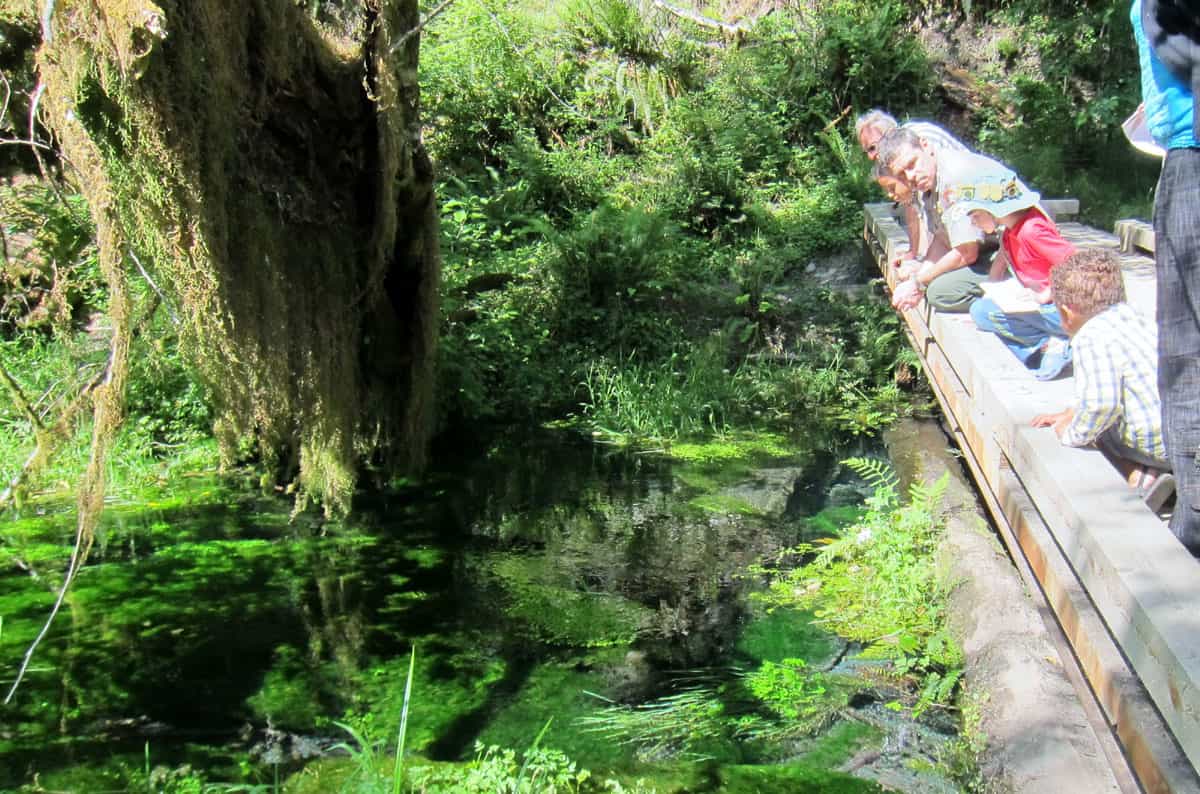
Spruce Nature Trail is a 1.2-mile loop through the forest to the Hoh River. Many visitors have been lucky enough to see grazing elk moving through the forest.
If you want a longer hike, people suggest pairing this trail with the Hall of Mosses trail for a fairly flat exploration of the rainforests in the area.
If you are a more adventurous hiker and would like to get further into the rainforest, I suggest taking the Hoh River Trail.
This is a 17.3-mile hike and will take you to Glacier Meadows, but keep in mind that you have to walk back the distance you walked!
2. Hike through Quinault Valley
This Valley offers you a chance to see some of the largest trees in the nation; there is a Sitka Spruce that measures 191 feet tall, a Western Red-cedar that is 159 feet tall, and a Douglas Fir that comes in at 281 feet tall!
There are many different trails you can choose from, including the following.
Kestner Homestead trail is a self-guided 1.3-mile loop that allows you to walk through a tunnel of maples, spruces, and hemlocks and learn about frontier life. You will walk through the Kestner family’s grounds and buildings dating back to the 1800s.
If exploring a homestead isn’t your idea of a good afternoon, the Irely Lake trail is a 1.1-mile hike with an elevation change of about 100 feet that ends at Irely Lake. This is a shallow lake that offers you some peace and quiet after your hike.
3. Explore Enchanted Valley
Enchanted Valley is home to the Enchanted Valley chalet, which opened its doors back in the early ‘30s.
In World War II it served as an Aircraft Warning Station and is now only used as an emergency shelter and ranger station due to the changing landscape of the valley caused by the Quinault River.
Many people suggest planning to camp overnight during the hike to Enchanted Valley, but it can be done in one day, so don’t plan to do anything else.
The 13-mile hike from Graves Creek is moderately difficult but worth it since you will get the chance to see the old-growth forest, waterfalls, and the historic chalet.
Along the trail, keep your eyes open for ptarmigan, elk, and deer. The valley is home to a population of black bears, so make sure to brush up on your bear safety skills, which include keeping your distance and being noisy so you don’t surprise a bear.
If you need more information, check out this post by the National Park Service.
Mountains & Old Growth Forests
Hurricane Ridge Visitors Center is open daily in the summer, but for the rest of the year, the center’s hours vary, so check the website for detailed information about your specific dates.
The Visitor Center has exhibits about the different mountain habitats and an orientation film. On the lower level of the center is a snack bar and gift shop, so this is a good stop if you want a souvenir from your visit!
4. Kayak or Canoe on Lake Crescent
Lake Crescent is a glacially-carved lake with crystal-clear turquoise waters that plunge to over 600 feet deep in some places. Due to the low nitrogen levels in the water, there are limited algae in the water so that you can see as much as 60 feet from the surface.
Located along the shores are rentals that include pedal boats, row boats, kayaks, canoes, and more, all to help you explore this beautiful body of water.
Most people suggest taking the time to get out onto the lake so you can see the viewpoint looking back on the shore. So, take the vessel of your choice and row or paddle!
If you are looking for a more low-key chance to take in Lake Crescent, there are many areas along the shore where you can sit and enjoy the scenery.
East Beach, Bovee’s Meadow, North Shore, and La Poel (in the summer only) have areas set up for you to picnic and vault toilets available for your use.
Around the lake are numerous hiking trails, so if you decide to explore, here are a couple of the trails I suggest!
If you want an easy, self-guided nature trail so you can see different views of the lake and forest, then I recommend the Moments in Time Trail. It is a 0.6-mile loop with no change in elevation.
The Marymere Falls Trail is a 0.9-mile one-way path through the old-growth forest surrounding the lake.
There is an elevation change of 400 feet, but it leads you to a 90-foot waterfall, so if you can handle a medium-difficulty trail, then I would suggest heading off on this one!
5. Explore Hurricane Ridge
Hurricane Ridge is accessible by the Heart O’ the Hills Road, which offers many amazing views as you drive to your destination. Once you arrive, you will be awed by the many views of the snow-capped mountains surrounding you.
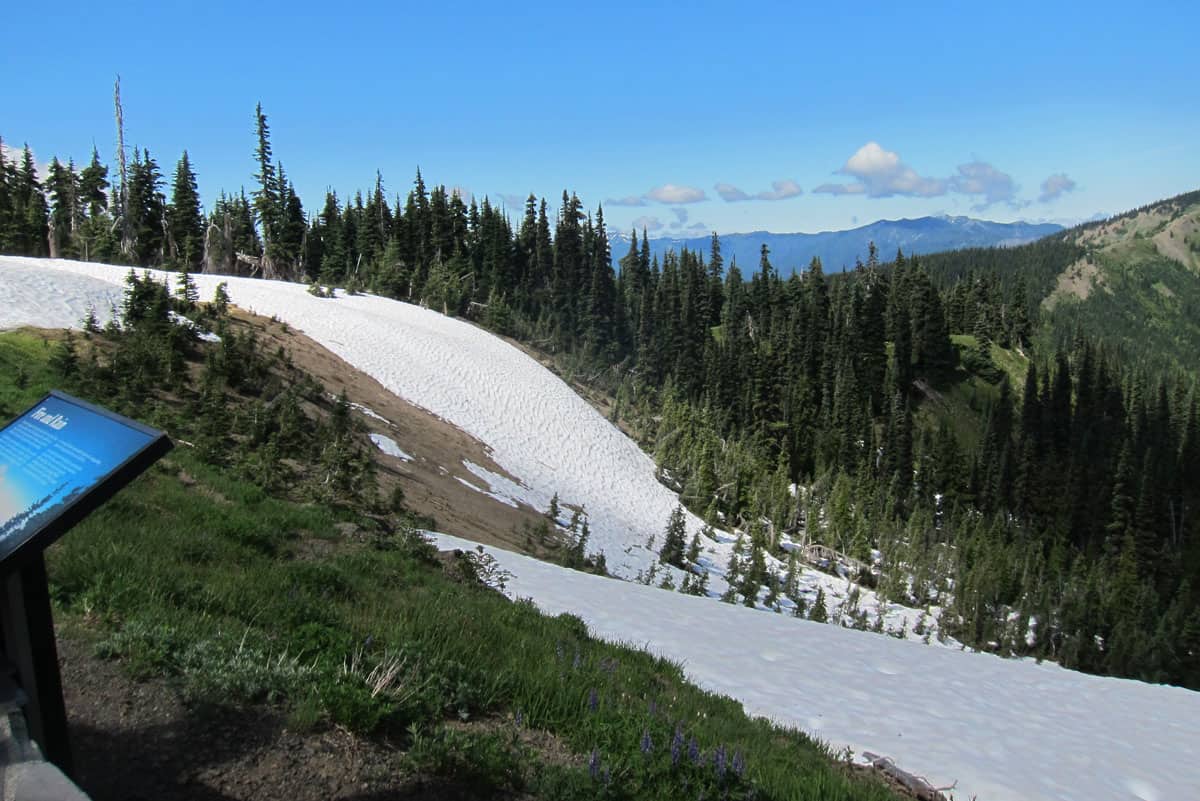
There are a couple of paved trails available here. Cirque Rim is 0.5 miles (one-way) and will provide you with different views of Port Angeles and the Strait of Juan de Fuca.
The Big Meadow Trail is a 0.25-mile trail (one-way) that crosses open meadows and provides you with views of the Olympic Mountains.
High Ridge Trail is a 0.5-mile partially paved loop that has an elevation change of around 220 feet. I suggest you take the dead-end 0.1-mile spur that dead-ends at Sunrise Point. You will be treated to some amazing views from this spot!
Hurricane Ridge is also the home to one of the only ski lifts operating within a national park. So, if you are visiting in the winter, this is a private, no-frills, family-friendly spot to enjoy your favorite winter activity.
Keep in mind, though, that in the winter, Hurricane Ridge Road will only be open Friday through Sunday.
6. Soak in the Hot Springs at Sol Duc Resort
The mineral hot spring waters are fed by rain and melting snow seeping into cracks in the sedimentary rocks, which are heated by the gases from the cooling volcanic rocks located under the surface.
Eventually, the spring rises back to the surface, creating pools along the cracks and fissures in the ground.
Natural hot springs are naturally occurring and can contain harmful bacteria when they are not maintained.
Sol Duc Resort allows you to get a feel of the hot springs without the danger associated with springs found elsewhere in the park. it is much more accessible!
Sol Duc Hot Springs Resort allows visitors to purchase passes if they are not staying at the resort and is free to anyone choosing to book a room there. Towels and lockers are also available for a fee.
The resort has three mineral hot spring soaking pools and one freshwater pool to help soothe your weary muscles from all your exploring.
The mineral pools have water with a natural temperature of around 100*F (38*C), and the freshwater pool’s temperature changes with the season, from 50-85*F (10-30*C).
In addition to the Hot Springs, Sol Duc Valley has a wide network of trails that branch off from the Sol Duc Falls trail.
Pacific Coast
Kalaloch Ranger Station has a bookstore and provides information about the coast, Forks, and the other areas located on the west side of the peninsula. It is open daily during the “season,” but hours vary.
Read more: 11 Must-See Attractions Along the Washington State Coast Line (Inc. a Map and Itinerary)
7. Explore Rialto Beach Or Ruby Beach
Rialto Beach is considered one of the best beaches in Washington, according to Frommer’s Travel Guides and locals.
The water is usually too cold for swimming, but the rugged features of the beach are awe-inspiring. Locals also suggest activities such as beach-combing, exploring tide pools, and viewing sea stacks.
We did find sand dollars along the beach and plenty of sea stars and anemones in the tidepools. Just make sure to check the tide tables before you arrive, so you get there when the tide is low.
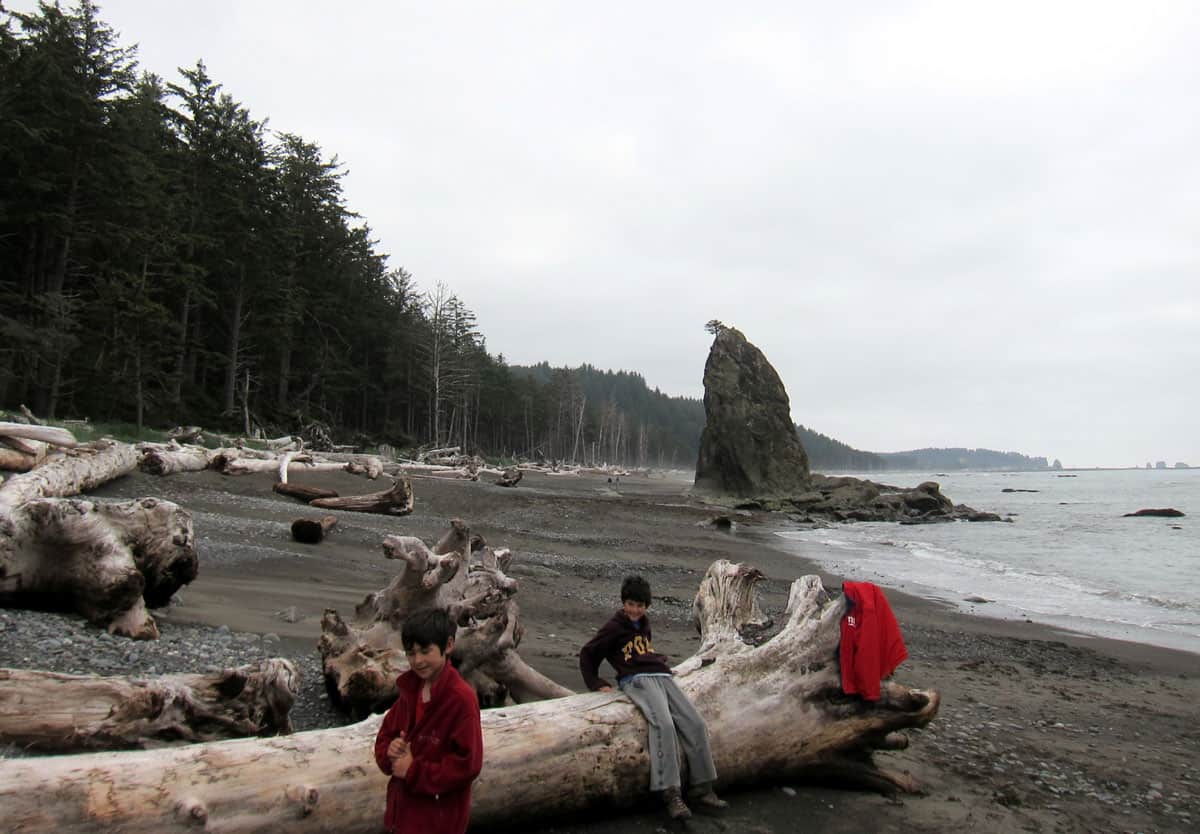
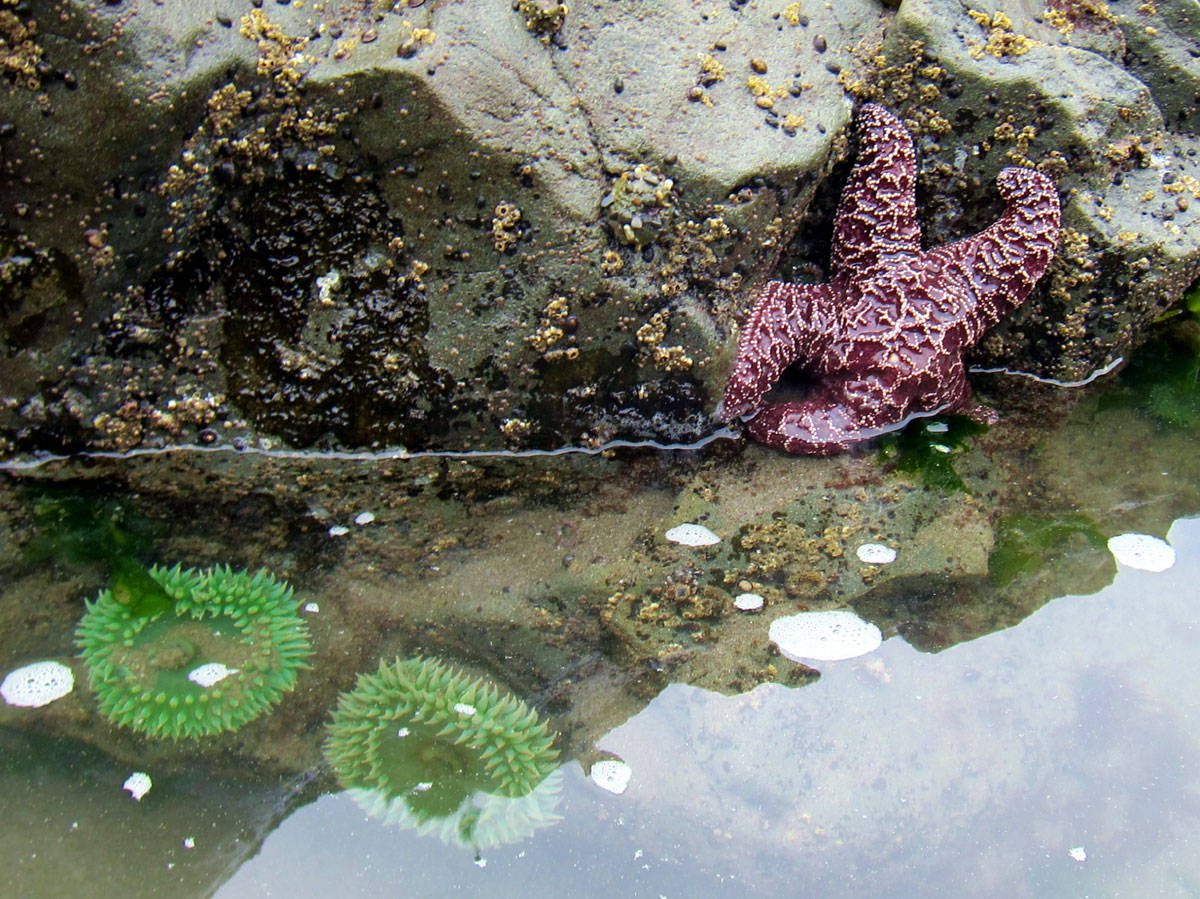
There is a parking lot just above Rialto Beach, which makes it a good starting place for many different hikes. One of the best, and most often suggested, is the hike to Hole in the Wall (which happens to be #8 on this list!).
8. Hike to Hole in the Wall
This arch was formed by a colossal rock being constantly battered by waves and winds. Over time, a tunnel was bored through the rock, creating the famous Hole in the Wall. It is located 1 mile north of Rialto Beach and is easily accessible during low tide (usually in the afternoon).
The “hike” is a walk along the beach, but depending on your timing and the tides, you might not be able to get all the way to Hole in the Wall. Along the way, there is also a small creek you have to cross, which might cause you to end up getting a little wet, so plan ahead.
As you walk along the beach to (and back from) Hole in the Wall, you will be able to see numerous offshore sea stacks, Gunsight Rock, and Little James Islands. Keep your eyes open for a wide array of wildlife, including whales, sea lions, otters, and eagles.
9. Go Whale Watching or Tide Pooling at Kalaloch Beach
Kalaloch Beach is one of Olympic National Park’s most visited areas partly due to the ease of access right off Highway 101 and the Ranger Station being located there.
In reality, though, the draw of this beach has more to do with the amazing wildlife and scenery that visitors have called “picture perfect.”
Birdwatchers love it for the large populations of coastal birds that nest and feed along the coast, including bald eagles.
Other visitors enjoy getting a chance to see the otters, harbor seals, and porpoises that can often be found sunning on the sand. Kalaloch is also known for miles of driftwood-strewn sand.
There are quite a few day hikes available around Kalaloch Beach. Kalaloch Nature Trail is an easy 1.0-mile loop that will take you through the coastal forest. Seven other trails lead to the ocean from the highway; Ruby and Beach Trail 4 have vault toilets and accessible viewpoints.
And yes, we did get to see whales from the shore!!
We stood there enthralled for about 15 minutes as this huge whale was feeding within 200 yards of us. It was difficult to take good pictures because the whale would only pop up for a couple of seconds at a time. Still, it's super exciting!
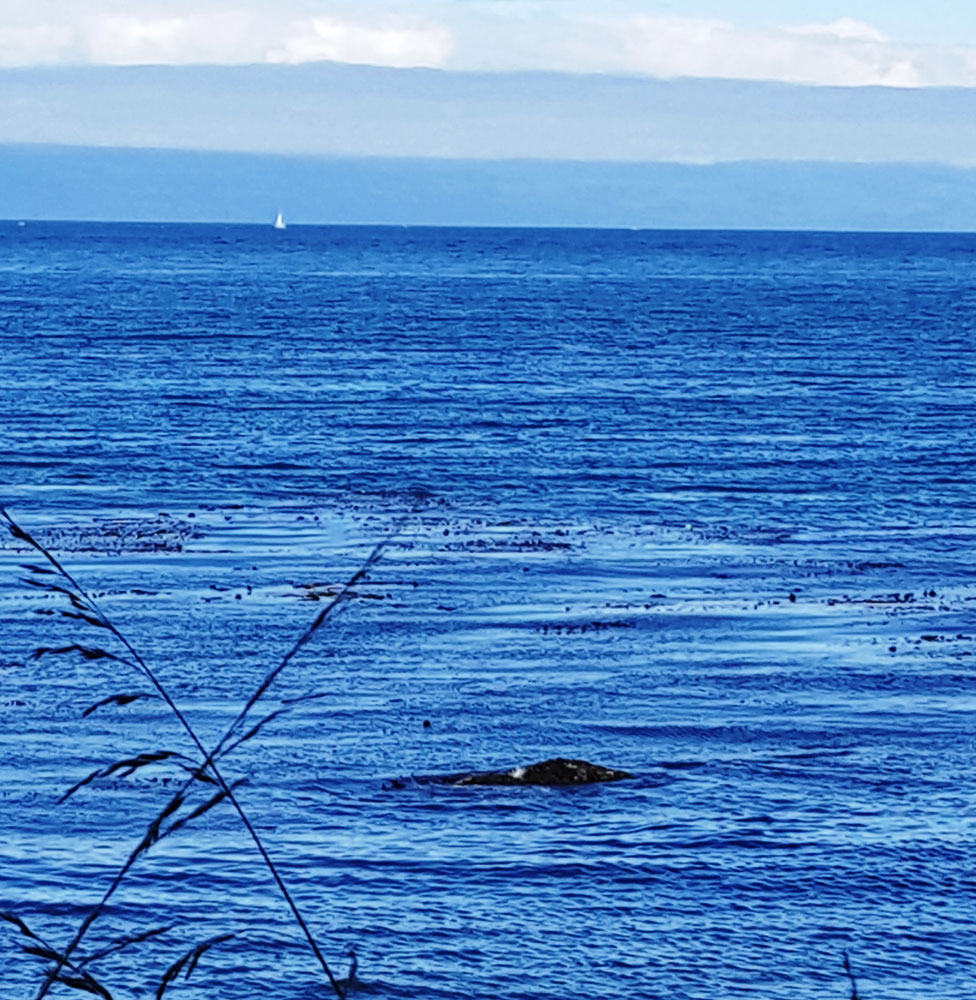
10. Take in a Sunset (or Storm) at Kalaloch Lodge
Kalaloch Lodge is situated on a bluff overlooking where the Kalaloch Creek flows into the Pacific Ocean. The original lodge was built back in 1953 with lumber from the driftwood logs that washed up on the beaches.
There is a patio with outdoor seating that is perfect for taking in the view as the sun sets over the Pacific Ocean.
11. Explore Neah Bay
While not technically a part of Olympic National Park, Neah Bay is visible from the Cape Flattery Trail and is worth a look if you have the time.
This little gem is situated at the northwest tip of the Olympic Peninsula and just across the Strait of Juan de Fuca from Canada. Here, you can see the emerald-green waters of the Pacific and the coastal peaks of Vancouver.
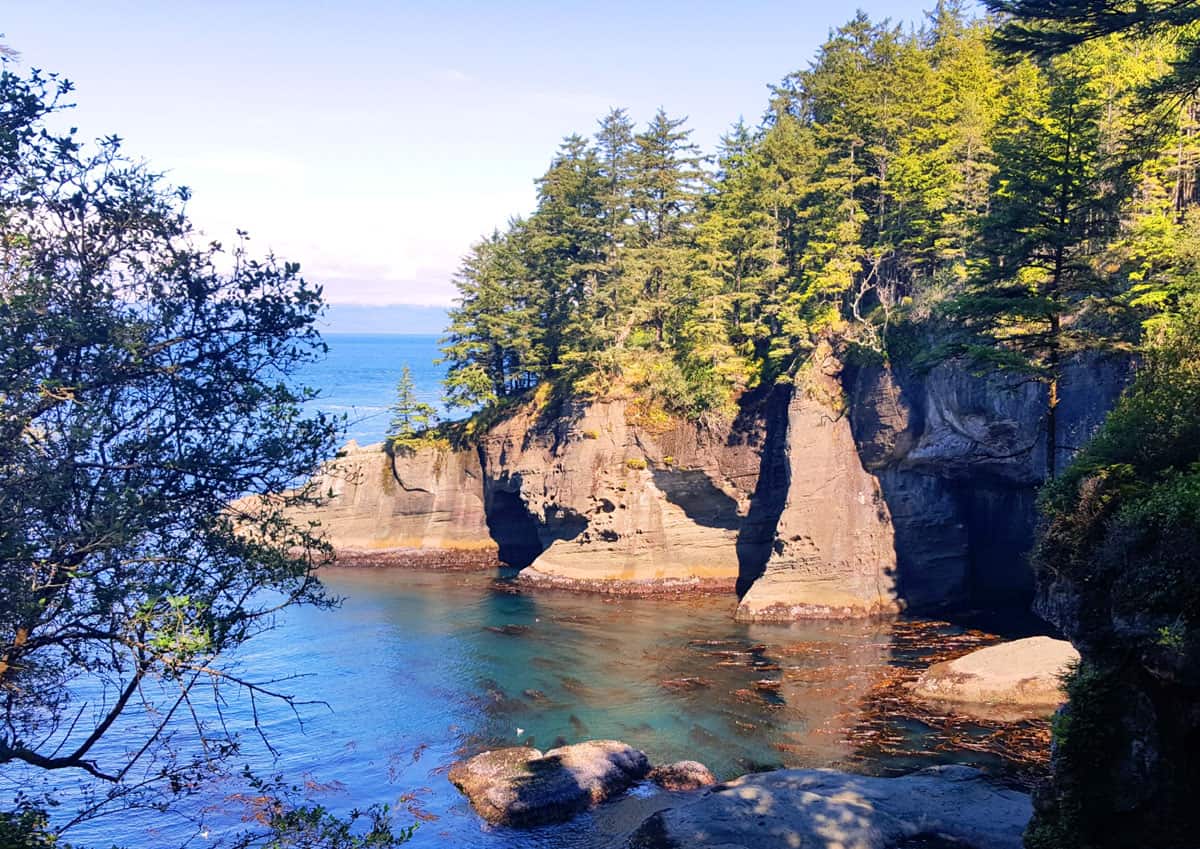
Neah Bay is the home of the Makah Tribe and has been for as long as records have been kept. There is a museum located here that displays artifacts of the tribe going back 300-500 years.
Where should you stay while visiting Olympic National Park?
Where you should stay will depend on what area(s) of the park you are interested in visiting.
Port Angeles is where the Olympic National Park Visitors Center is located. It is a good location to stay in when you arrive and when you are exploring the mountain areas in the park. Based on the reviews and the cost, these are the two locations I would look at staying at.
Olympic Lodge (A mountain lodge feel with proximity to the Visitors Center)
Flagstone Motel (Close to the Visitors Center, a well-rated and well-priced option)
Forks is an ideal location to stay if you want to explore the coastal areas of the park since it is much closer to these areas than Port Angeles.
I would also suggest staying in Forks if you, or someone you are traveling with is a big fan of Twilight since this is the famed city from the book series.
Hoh Valley Cabins (If you like the idea of “roughing it” but not the actual act of “roughing it!)
Far West Motel (For a well-rated yet well-priced option)
What do you think?
Let us know how your trip goes and whether you have any additional suggestions on things to do while in that part of the Pacific Northwest!
If you have been to Olympic National Park, do you have any suggestions for adding to this list? As always, if you have any questions about visiting the park, let me know, and I'll do my best to help.
Also, here are a few additional pins you can use to save this post to Pinterest. And thank you in advance for sharing!
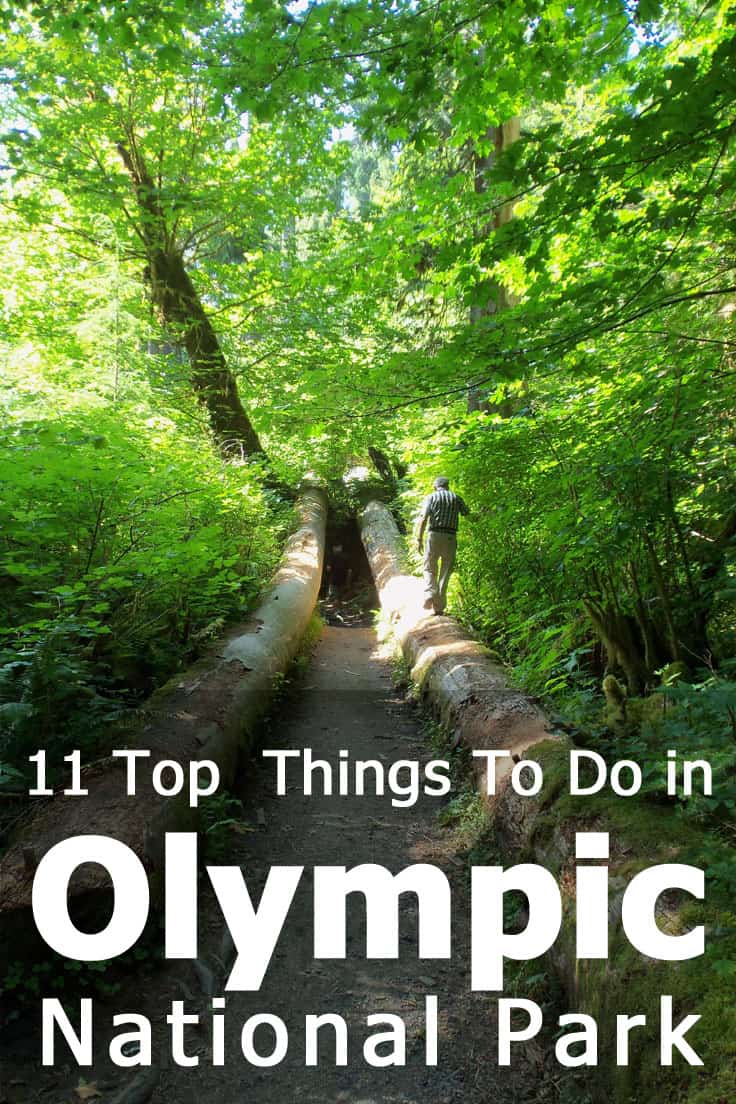
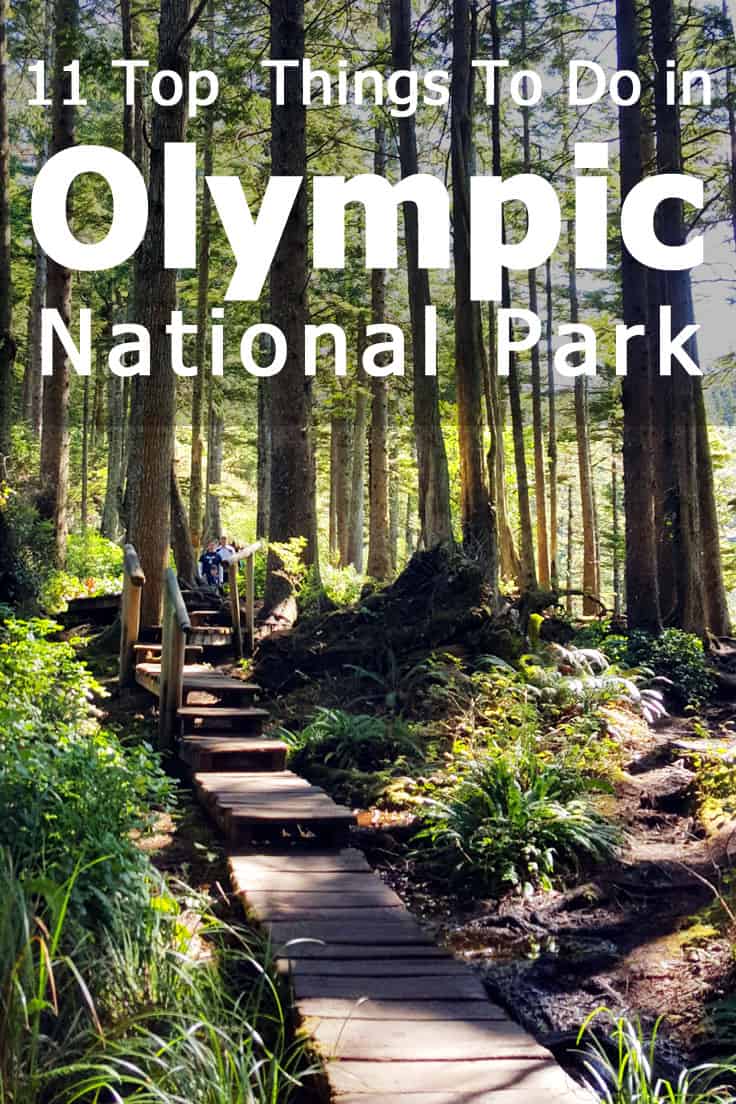
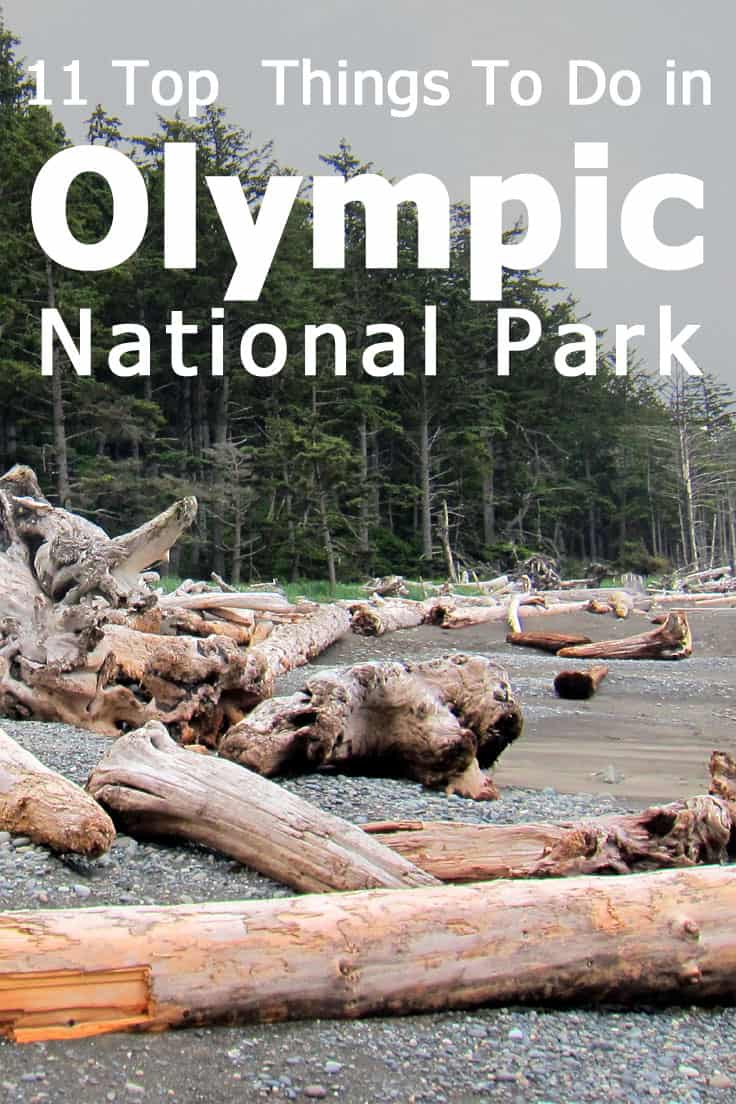

What a well written and thoughtful post. Thank you.